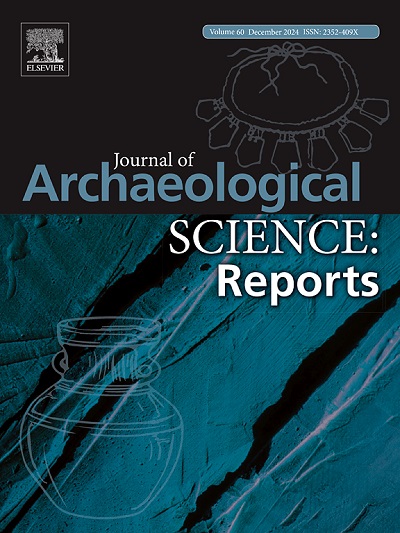永葆威严——用香料防腐波兰国王奥古斯都二世的考古、考古植物学和生物人类学证据(18世纪)
IF 1.5
2区 历史学
0 ARCHAEOLOGY
引用次数: 0
摘要
2019年,作为克拉科夫瓦维尔城堡(Kraków)(波兰南部)皇家墓地保护工作的一部分,对国王奥古斯都二世(1670-1733)的石棺进行了检查。先前的研究表明,国王的遗体在他死后被防腐处理,这在历史资料中有所提及。然而,这些来源不包括有关技术或所用材料的细节。这项研究提供了关于18世纪波兰统治者埋葬的新信息。考古和生物人类学分析显示,国王的眼睛被玻璃假体取代,心脏被移除,植物材料取代了腹部器官和大脑。对植物材料进行了宏观植物学和孢粉学分析。鉴于所鉴定的植物类型,用于防腐的植物的选择是由实际因素而不是宗教因素指导的。这些植物包括具有显著防腐性能和强烈香味的草药和香料。此外,它们全年都能买到,可以储存在皇家食品库或药房里,即使在冬天也不会失去很多特性。我们展示了在没有详细书面记录的情况下识别历史防腐做法的多代理方法的价值。本文章由计算机程序翻译,如有差异,请以英文原文为准。
Perpetuate the majesty – archaeological, archaeobotanical, and bio-anthropological evidence of embalming the Polish king Augustus II the Strong (18th Century)
In 2019, the sarcophagus of King Augustus II the Strong (1670–1733) was examined as part of conservation work in the royal burial crypts at Wawel Castle in Cracow (Kraków) (Southern Poland). Previous research demonstrated that the king’s body was embalmed after his death, which is mentioned in historical sources. However, these sources include no details regarding the techniques or the materials used. This research presents new information about the burials of Polish rulers in the 18th Century. Archaeological and bio-anthropological analysis revealed that the king’s eyes were replaced with glass prostheses, the heart was removed, and plant material replaced the abdominal organs and the brain. The botanical material was subjected to macrobotanical and palynological analyses. Given the types of plants identified, the choice of plants used for embalming was guided by practical, rather than religious, considerations. The plants include herbs and spices with significant antiseptic properties and strong fragrances. Moreover, they were accessible throughout the year and could be stored in the royal larder or pharmacy and dried without losing much of their properties, even during winter. We demonstrate the value of multiproxy approaches in identifying historic embalming practices without detailed written records.
求助全文
通过发布文献求助,成功后即可免费获取论文全文。
去求助
来源期刊

Journal of Archaeological Science-Reports
ARCHAEOLOGY-
CiteScore
3.10
自引率
12.50%
发文量
405
期刊介绍:
Journal of Archaeological Science: Reports is aimed at archaeologists and scientists engaged with the application of scientific techniques and methodologies to all areas of archaeology. The journal focuses on the results of the application of scientific methods to archaeological problems and debates. It will provide a forum for reviews and scientific debate of issues in scientific archaeology and their impact in the wider subject. Journal of Archaeological Science: Reports will publish papers of excellent archaeological science, with regional or wider interest. This will include case studies, reviews and short papers where an established scientific technique sheds light on archaeological questions and debates.
 求助内容:
求助内容: 应助结果提醒方式:
应助结果提醒方式:


